Dairy farming in Carrigmore, near Doon, Co Limerick, Martin Crowe has been cutting back on his nitrogen use over the last few years. With rising costs of fertiliser this year, he has decided to sow multispecies swards and oversow clover in a bid to further decrease his artificial nitrogen (N) use.
Milking 200 cows on a milking platform of 80ha (whole farm is 143ha), as well as rearing replacement heifers, his focus is on improving efficiency on the farm.
Cutting N use
“We’ve been doing very well at it,” says Martin. The farm is not heavily stocked, and there is silage left over from last year, so there is not the same pressure to make silage for the coming year. “We’re reducing as much [N] as we can, and seeing how we get on,” he says.
Martin’s artificial N use is 48kg N/ha so far this year. There are several paddocks that have not received any chemical N this year, instead they’ve just received slurry. “After that, we’re relying on clover,” he says.
Grass measuring is being carried out on all paddocks to compare performance. The farm was a little bit tight on grass when we visited in early June, with the silage ground coming back into the rotation, but overall, Martin is happy with how the ground is performing. Fifty units of N per acre were spread on the silage ground, with a good crop harvested off it three weeks ago.
Multispecies swards
Due to his involvement in the Mulkear EIP, he decided to plant multispecies swards as one of his actions for the project. When it came to choosing the paddocks to sow, Martin based his decisions on paddocks that were underperforming, as well as being in close proximity to the farmyard so they could be easily monitored. After identifying 6ha that were suitable through grass measuring, the ground was burned off before the multispecies sward was put in with a power harrow and drilled last August. Martin was able to graze the ground in October before the winter set in, and then again at the end of the first rotation in early April.
“We’ve been measuring grass here for a few years, so one of the factors we identified was that some paddocks weren’t performing very well compared to the rest of the farm, and they also happened to be paddocks close to the farmyard,” he says. “In addition to this, it meant I was well able to keep an eye on what was going on in them, when we need to graze it and so on. When it’s here beside us, I see it every day. It was something new for us too, so I wanted to be able to keep on top of it.”
Seed mix
The mix contained chicory, plantain, red clover, white clover, timothy and perennial ryegrass.
In terms of performance, Martin is very pleased with the sward. It is keeping up well with the rotation, and only received 20 units of N in early February, followed by slurry in April. According to Martin, it is staying in the rotation so well that he may have to skip a few paddocks to graze it.
Managing the multispecies
The multispecies sward received 20 units of N per acre in early February, followed by 3,000 gallons/acre of slurry in the first week of April. As it was sown last August, Martin was concerned about how well the clover would take off, but he plans to oversow with clover if needed.
While weeds were a concern ahead of planting the sward, he says so far he has only had a few thistles, which he has gotten rid of through spot spraying.
Cow performance
The cows are grazing the sward by night, and are on ground further away by day, so Martin has yet to assess their performance on it. However, he adds that the cows seem to love it, and it is continuously cleaned out by them every time they graze it.
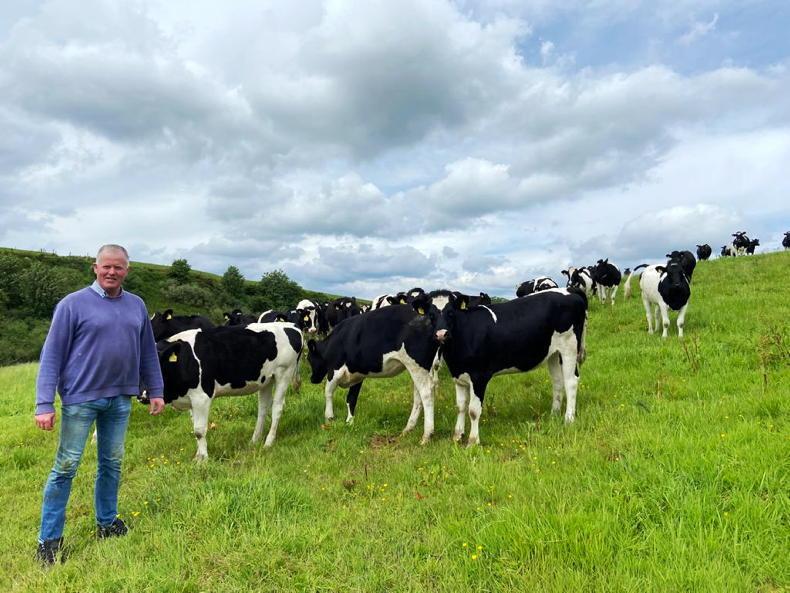
Some of Martin's replacement heifers, which are reared on the farm.
“The one worry I had was how it would look, but it actually doesn’t look too bad. It has worked out great for me,” he says.
Oversowing clover
To help cut his artificial nitrogen use, Martin decided to oversow clover on his farm. He decided to start oversowing clover in paddocks closer to home, before working his way out onto the grazing platform. To start off, paddocks that had sufficient levels of P, K and lime were identified. These were identified after soil testing, which was carried out as part of the Footprint Farmers programme.
The results revealed several paddocks needed over 1.5t of lime per acre, while soil P and K levels were deemed sufficient at index 4. Lime was spread on the ground last year, with a top up spread in the spring before the clover was oversown.
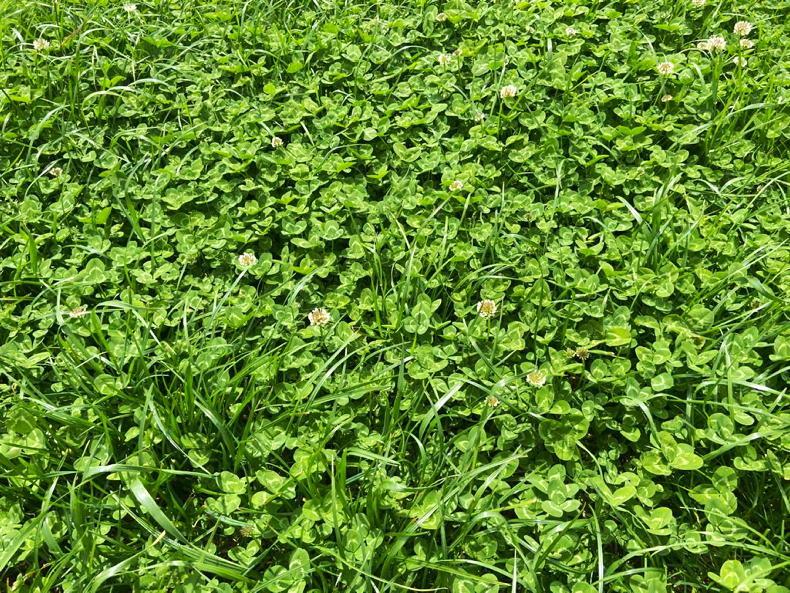
Martin oversowed clover in some paddocks, after clover scoring was carried out across the farm as part of the Footprint Farmers programme.
“I think that lime is the most important part of it. What it really showed me last year was, where we tipped the lime, there was an abundance of clover in that section of the field.
“It really identified that the pH has to be right for clover establishment. I’m a firm believer that lime is the secret.”
Martin also used clover scoring to determine which paddocks needed priority when it came to oversowing the clover. Clover scoring was carried out as part of the Footprint Farmers programme, and any paddock that had scores of over 70% did not need to be oversown.
Method of oversowing
After trying different methods of oversowing, Martin decided to invest in a tine harrow this year. The clover has taken well, according to Martin.
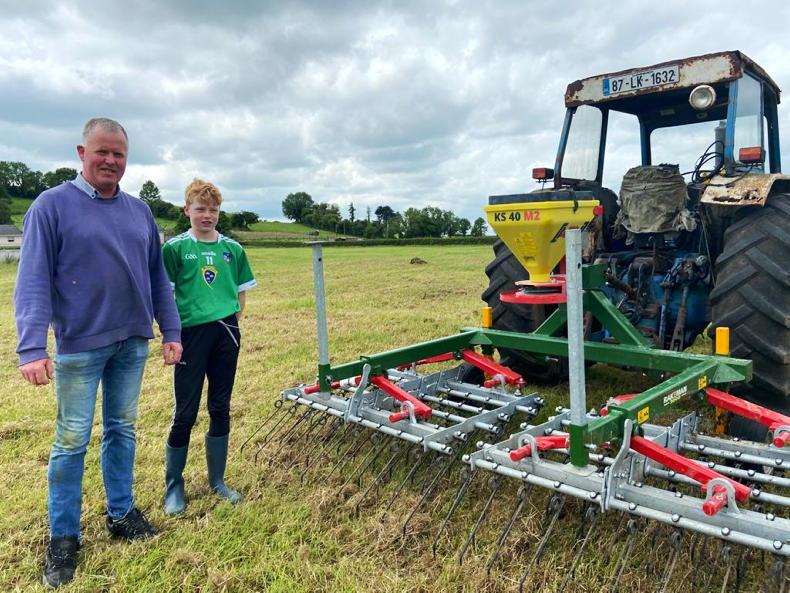
Martin and his son Diarmuid and their new tine harrow, which is being used to oversow the clover.
“In the first field, we put in 4kg per acre, which was a bit too much, but we were trying to calibrate the machine. The amount of clover coming up now is phenomenal.
“We’ve tried a few more fields since at lower rates and the seedlings are coming up nicely in it, so overall, the oversowing is going very well,” Martin said.
Managing weed control
Before oversowing, Martin ensured that the fields were well tidied up by the cows. In terms of management, he kept the fields grazed tight.
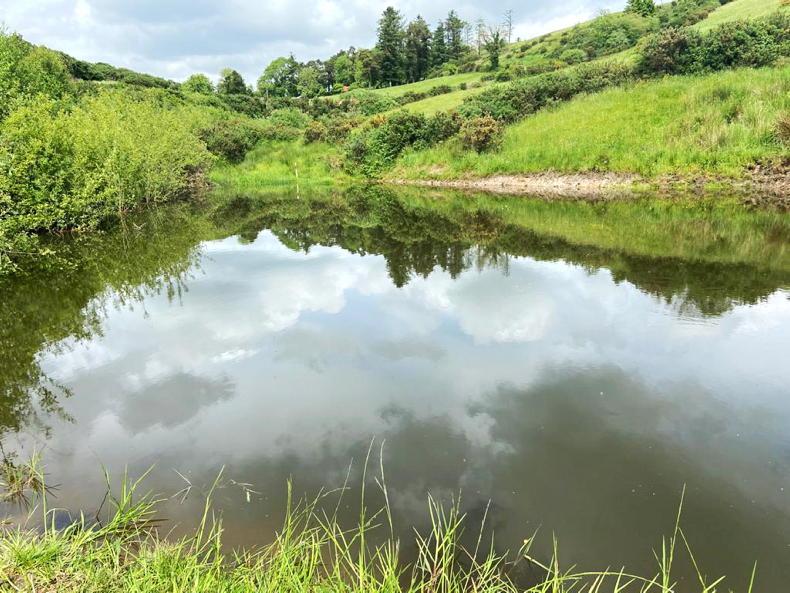
The pond was added as part of the Mulkear EIP.
Biodiversity on the farm
As part of the Mulkear EIP, Martin has implemented several measures on the farm to enhance biodiversity. One of these measures included putting in a pond on the out farm.
“This ground has never had a tractor in it, it was idle,” says Martin.
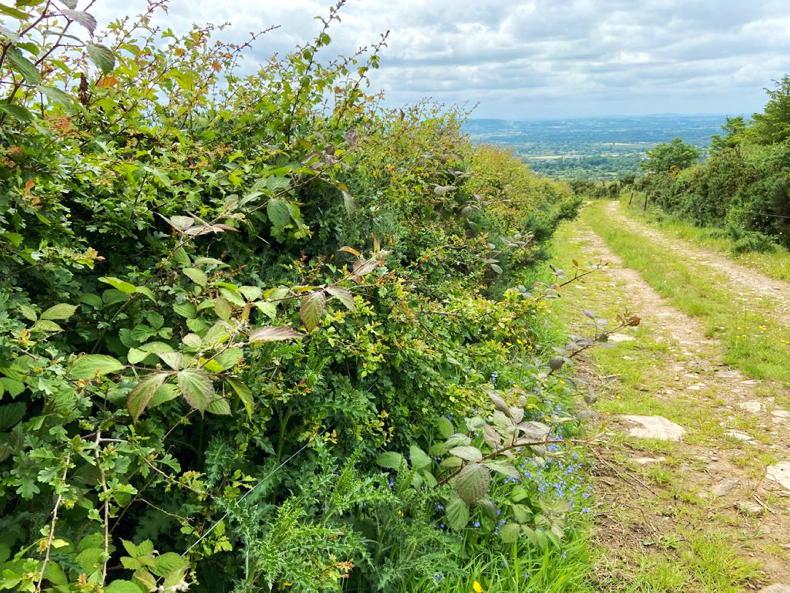
Martin has turned his focus to improving biodiversity on his farm.
He plans to add another pond in the coming years, as well as planting more trees.
Soil testing
“Soil test results are very important, I’d always take soil tests.
“They’re vitally important to maximise efficiency more than anything else, not maximise production because I’m not trying to maximise production any more.
“At the moment, I’m trying to learn how to use as little nitrogen as possible. To date this year, I have cut back my N use to 48kg N/ha,” Martin says.
Dairy farming in Carrigmore, near Doon, Co Limerick, Martin Crowe has been cutting back on his nitrogen use over the last few years. With rising costs of fertiliser this year, he has decided to sow multispecies swards and oversow clover in a bid to further decrease his artificial nitrogen (N) use.
Milking 200 cows on a milking platform of 80ha (whole farm is 143ha), as well as rearing replacement heifers, his focus is on improving efficiency on the farm.
Cutting N use
“We’ve been doing very well at it,” says Martin. The farm is not heavily stocked, and there is silage left over from last year, so there is not the same pressure to make silage for the coming year. “We’re reducing as much [N] as we can, and seeing how we get on,” he says.
Martin’s artificial N use is 48kg N/ha so far this year. There are several paddocks that have not received any chemical N this year, instead they’ve just received slurry. “After that, we’re relying on clover,” he says.
Grass measuring is being carried out on all paddocks to compare performance. The farm was a little bit tight on grass when we visited in early June, with the silage ground coming back into the rotation, but overall, Martin is happy with how the ground is performing. Fifty units of N per acre were spread on the silage ground, with a good crop harvested off it three weeks ago.
Multispecies swards
Due to his involvement in the Mulkear EIP, he decided to plant multispecies swards as one of his actions for the project. When it came to choosing the paddocks to sow, Martin based his decisions on paddocks that were underperforming, as well as being in close proximity to the farmyard so they could be easily monitored. After identifying 6ha that were suitable through grass measuring, the ground was burned off before the multispecies sward was put in with a power harrow and drilled last August. Martin was able to graze the ground in October before the winter set in, and then again at the end of the first rotation in early April.
“We’ve been measuring grass here for a few years, so one of the factors we identified was that some paddocks weren’t performing very well compared to the rest of the farm, and they also happened to be paddocks close to the farmyard,” he says. “In addition to this, it meant I was well able to keep an eye on what was going on in them, when we need to graze it and so on. When it’s here beside us, I see it every day. It was something new for us too, so I wanted to be able to keep on top of it.”
Seed mix
The mix contained chicory, plantain, red clover, white clover, timothy and perennial ryegrass.
In terms of performance, Martin is very pleased with the sward. It is keeping up well with the rotation, and only received 20 units of N in early February, followed by slurry in April. According to Martin, it is staying in the rotation so well that he may have to skip a few paddocks to graze it.
Managing the multispecies
The multispecies sward received 20 units of N per acre in early February, followed by 3,000 gallons/acre of slurry in the first week of April. As it was sown last August, Martin was concerned about how well the clover would take off, but he plans to oversow with clover if needed.
While weeds were a concern ahead of planting the sward, he says so far he has only had a few thistles, which he has gotten rid of through spot spraying.
Cow performance
The cows are grazing the sward by night, and are on ground further away by day, so Martin has yet to assess their performance on it. However, he adds that the cows seem to love it, and it is continuously cleaned out by them every time they graze it.

Some of Martin's replacement heifers, which are reared on the farm.
“The one worry I had was how it would look, but it actually doesn’t look too bad. It has worked out great for me,” he says.
Oversowing clover
To help cut his artificial nitrogen use, Martin decided to oversow clover on his farm. He decided to start oversowing clover in paddocks closer to home, before working his way out onto the grazing platform. To start off, paddocks that had sufficient levels of P, K and lime were identified. These were identified after soil testing, which was carried out as part of the Footprint Farmers programme.
The results revealed several paddocks needed over 1.5t of lime per acre, while soil P and K levels were deemed sufficient at index 4. Lime was spread on the ground last year, with a top up spread in the spring before the clover was oversown.

Martin oversowed clover in some paddocks, after clover scoring was carried out across the farm as part of the Footprint Farmers programme.
“I think that lime is the most important part of it. What it really showed me last year was, where we tipped the lime, there was an abundance of clover in that section of the field.
“It really identified that the pH has to be right for clover establishment. I’m a firm believer that lime is the secret.”
Martin also used clover scoring to determine which paddocks needed priority when it came to oversowing the clover. Clover scoring was carried out as part of the Footprint Farmers programme, and any paddock that had scores of over 70% did not need to be oversown.
Method of oversowing
After trying different methods of oversowing, Martin decided to invest in a tine harrow this year. The clover has taken well, according to Martin.

Martin and his son Diarmuid and their new tine harrow, which is being used to oversow the clover.
“In the first field, we put in 4kg per acre, which was a bit too much, but we were trying to calibrate the machine. The amount of clover coming up now is phenomenal.
“We’ve tried a few more fields since at lower rates and the seedlings are coming up nicely in it, so overall, the oversowing is going very well,” Martin said.
Managing weed control
Before oversowing, Martin ensured that the fields were well tidied up by the cows. In terms of management, he kept the fields grazed tight.

The pond was added as part of the Mulkear EIP.
Biodiversity on the farm
As part of the Mulkear EIP, Martin has implemented several measures on the farm to enhance biodiversity. One of these measures included putting in a pond on the out farm.
“This ground has never had a tractor in it, it was idle,” says Martin.

Martin has turned his focus to improving biodiversity on his farm.
He plans to add another pond in the coming years, as well as planting more trees.
Soil testing
“Soil test results are very important, I’d always take soil tests.
“They’re vitally important to maximise efficiency more than anything else, not maximise production because I’m not trying to maximise production any more.
“At the moment, I’m trying to learn how to use as little nitrogen as possible. To date this year, I have cut back my N use to 48kg N/ha,” Martin says.











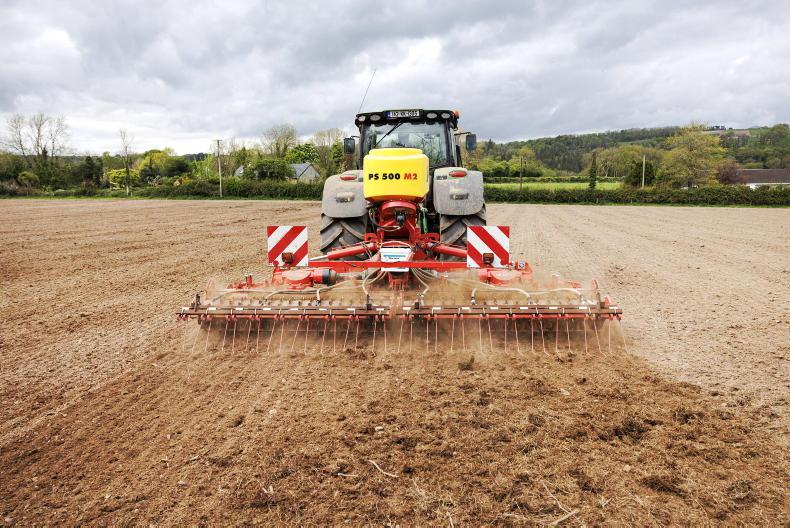


SHARING OPTIONS